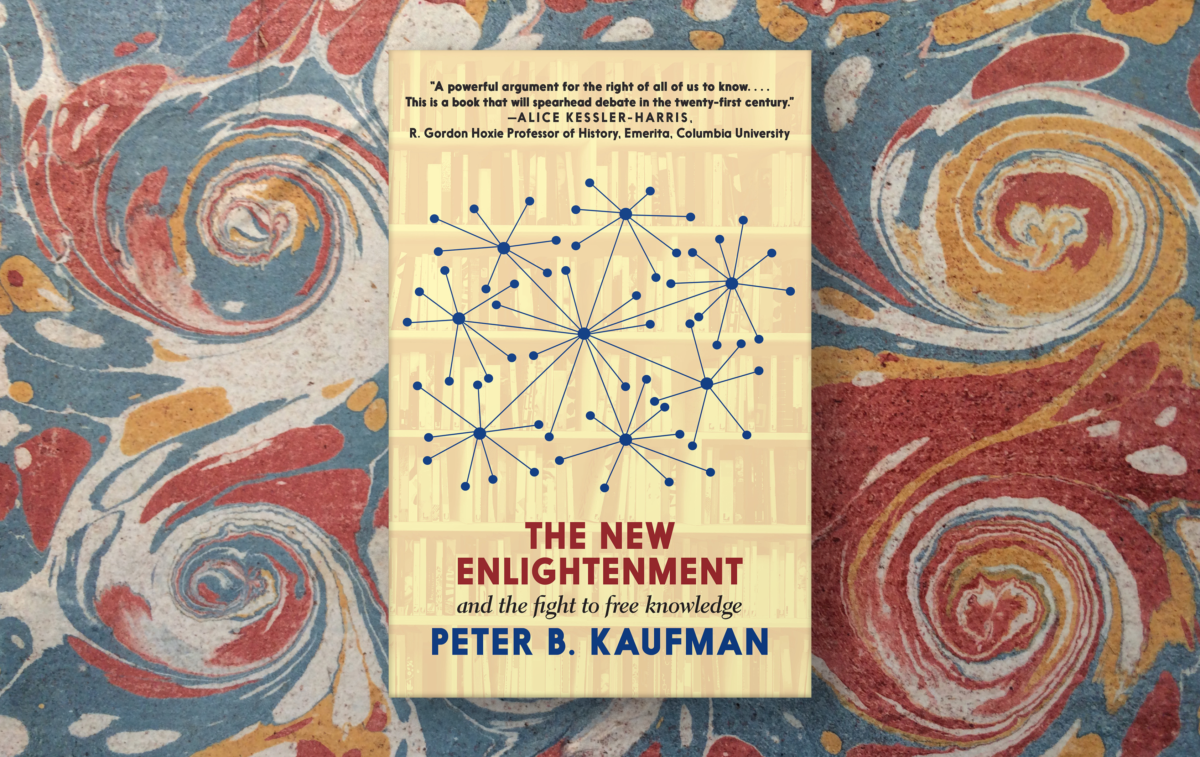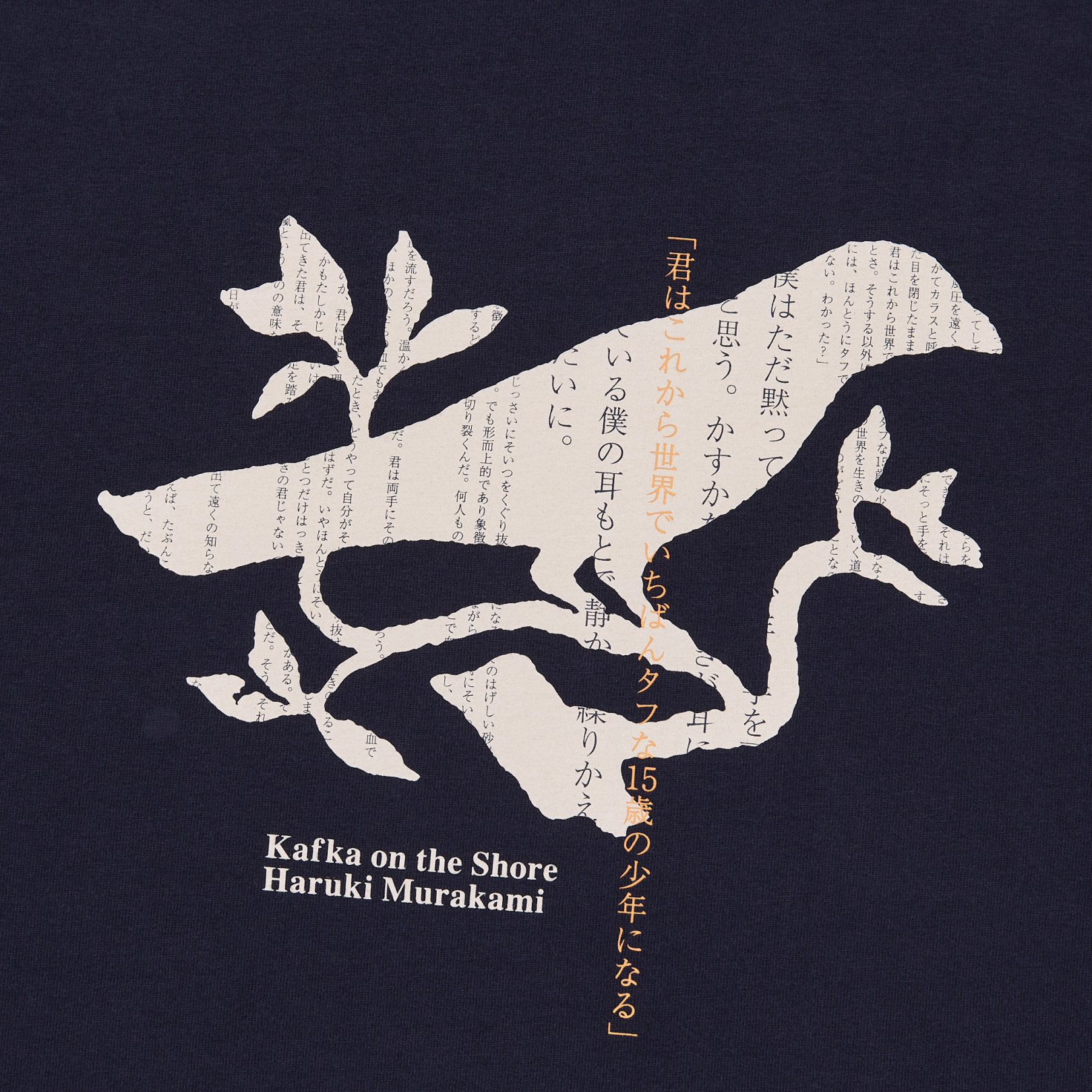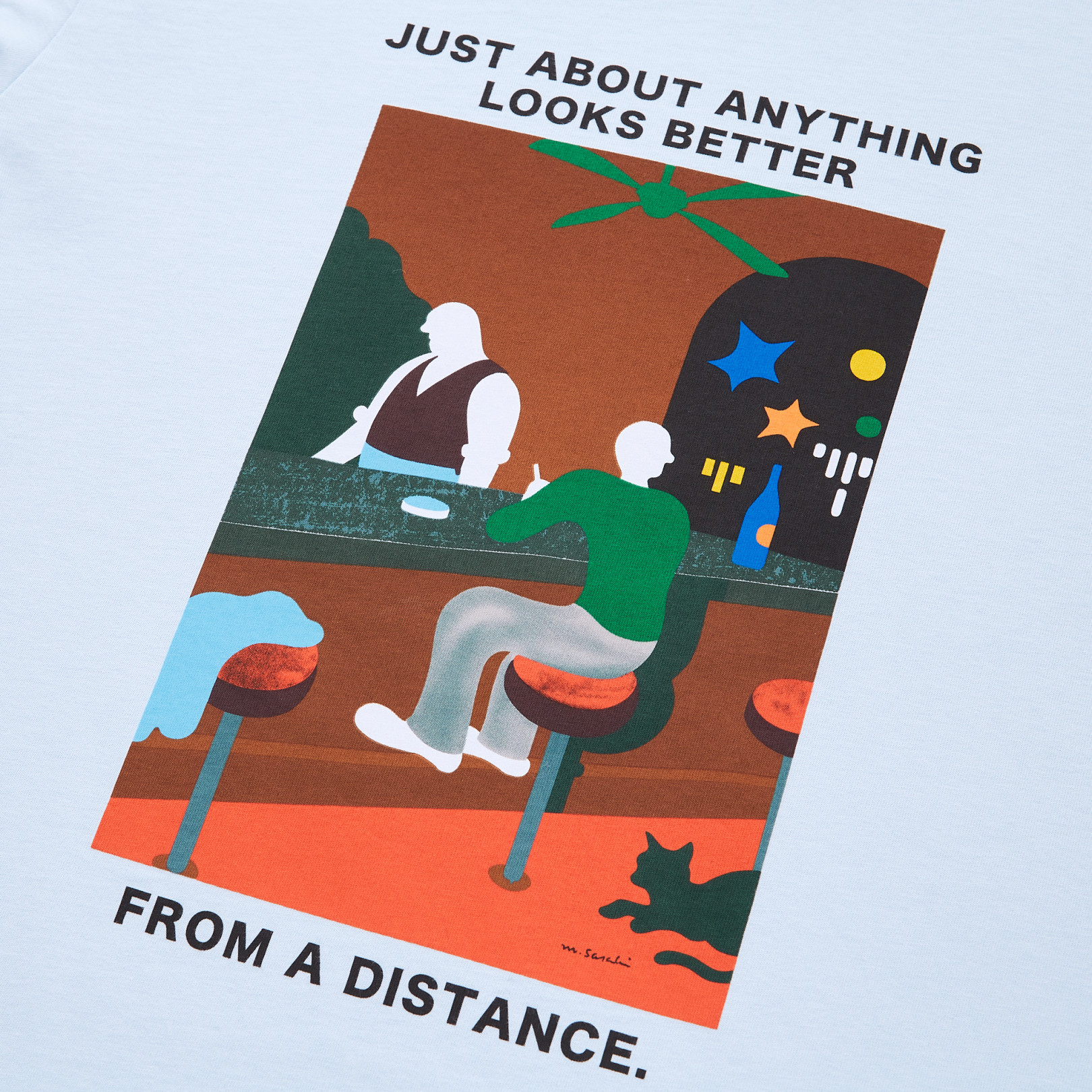[Most Recent Entries] [Calendar View]
Thursday, March 4th, 2021
| Time | Event |
| 9:00a | The New Enlightenment and the Fight to Free Knowledge: Part 1
Editor’s Note: This month, MIT Open Learning’s Peter B. Kaufman has published The New Enlightenment and the Fight to Free Knowledge, a book that takes a historical look at the powerful forces that have purposely crippled our efforts to share knowledge widely and freely. His new work also maps out what we can do about it. In the coming days, Peter will be making his book available through Open Culture by publishing three short essays along with links to corresponding sections of his book. Today, you can find his short essay “The Monsterverse” below, and meanwhile read/download the first chapter of his book here. You can purchase the entire book online. The Monsterverse – what exactly is it? Like Sauron and his minions from Mordor in The Lord of the Rings, like Sheev Palpatine and the armies of the Galactic empire from Star Wars, like Lord Voldemort and his henchmen the Death Eaters in Harry Potter, it’s the collective force of evil, one that strives to shut down human progress, freedom, justice, the spread of knowledge –the dissemination of (let us just say it) open culture. It’s the subject of the first chapter of my book, The New Enlightenment and the Fight to Free Knowledge – and its incarnations have been with us for thousands of years. In 1536, which is when the book begins, it found its embodiment in Jacobus Latomus, who oversaw the trial and execution – by strangling and burning at the stake – of a translator and a priest named William Tyndale. Latomus, who himself was overseen by Thomas More, who himself was overseen by Henry VIII (with Pope Clement VII in a supporting role), choreographed Tyndale’s formal degradation, such that a couple dozen apostolic inquisitors and theologians, university rectors and faculty, lawyers and privy councilors – “heresy-hunters,” as his biographer calls them – led him out of his prison cell in public and in his priestly raiment to a high platform outdoors where oils of anointment were scraped symbolically from his hands, the bread and wine of the Eucharist situated next to him and then just as quickly removed, and then his vestments “ceremonially stripped away,” so that he would find himself, and all would see him as, no longer a priest. Death came next. This scholar and polymath to whom, it is now known, we owe as much as we owe William Shakespeare for our language, this lone man sought and slain by church and king and holy Roman emperor – his initial strangling did not go well, so that when he was subsequently lit on fire, and the flames first lapped at his feet and up his legs, lashed tight to the stake, he came to, and, while burning alive in front of the crowd of religious leaders and so-called justices (some seventeen trial commissioners) who had so summarily sent Tyndale to his death and gathered to watch it, live, he cried out, less to the crowd, it would seem, than to Another: “Lord! Lord! Open the King of England’s eyes!” What did Tyndale do? He believed that the structure of communication during his time was broken and unfair, and with a core, unwavering focus, he sought to make it so that the main body of knowledge in his day could be accessed and then shared again by every man alive. He engaged in an unparalleled act of coding (not for nothing do we speak of computer programming “languages”), working through the Latin, Greek, Hebrew, and Aramaic of the Bible’s Old, then New, Testaments to bring all of its good books – from Genesis 1 to Revelation 22—into English for everyday readers. He is reported to have said, in response to a question from a priest who had challenged his work, a priest who read the Bible only in Latin: “I will cause a boy that driveth the plough shall know more of the Scripture than thou dost.” And he worked with the distribution technologies of his time – the YouTubes, websites, and Twitters back then – by connecting personally with book designers, paper suppliers, printers, boat captains, and horsemen across sixteenth-century Europe to bring the knowledge and the book that contained it into the hands of the people. It wasn’t easy. In Tyndale’s time, popes and kings had decreed, out of concern for keeping their power, that the Bible could exist and be read and distributed “only in the assembly of Latin translations” that had been completed by the monk Saint Jerome in approximately 400 CE. The penalties for challenging the law were among the most severe imaginable, for such violations represented a panoply of civil transgressions and an entire complexity of heresies. In taking on the church and the king – in his effort simply and solely to translate and then distribute the Bible in English – Tyndale confronted “the greatest power[s] in the Western world.” As he “was translating and printing his New Testament in Worms,” his leading biographer reminds us, “a young man in Norwich was burned alive for the crime of owning a piece of paper on which was written the Lord’s Prayer in English.” The Bible had been inaccessible in Latin for a thousand years, this biographer writes, and “to translate it for the people became heresy, punishable by a solitary lingering death as a heretic; or, as had happened to the Cathars in southern France, or the Hussites in Bohemia and Lollards in England, official and bloody attempts to exterminate the species.” Yuckadoo, the Monsterverse, but very much still with us. The strangleholds are real. And Tyndale’s successors in the fight to free knowledge include many freedom fighters and revolutionaries – going up against the forces that seek to constrain our growth as a society. Were Tyndale alive today, he would wonder about the state of copyright law and its overreach; the pervasive estate of surveillance capitalism; the sweeping powers of government to see and interfere in our communication. And he would wonder why the seemingly progressive forces on the side of freedom today – universities, museums, libraries, archives – don’t fight more against information oppression. Tyndale would recognize that the health pandemic, the economic crisis, the political violence we face today, are all the result of an information disorder, one that relies on squelching knowledge and promoting the darkest forms of ignorance for its success. How we come to grips with that challenge is the number-one question for our time. Discovering new paths to defeating it – overcoming the Dark Lords, destroying the Horcruxes, finally harnessing the Force – is the subject of the next two articles, and of the rest of the book. Peter B. Kaufman works at MIT Open Learning and is the author of The New Enlightenment and the Fight to Free Knowledge. This is the first of three articles. The New Enlightenment and the Fight to Free Knowledge: Part 1 is a post from: Open Culture. Follow us on Facebook, Twitter, and Google Plus, or get our Daily Email. And don't miss our big collections of Free Online Courses, Free Online Movies, Free eBooks, Free Audio Books, Free Foreign Language Lessons, and MOOCs. |
| 12:00p | Who Built the Egyptian Pyramids & How Did They Do It?: New Archeological Evidence Busts Ancient Myths Although it’s certainly more plausible than hypotheses like ancient aliens or lizard people, the idea that slaves built the Egyptian pyramids is no more true. It derives from creative readings of Old Testament stories and technicolor Cecil B. Demille spectacles, and was a classic whataboutism used by slavery apologists. The notion has “plagued Egyptian scholars for centuries,” writes Eric Betz at Discover. But, he adds emphatically, “Slaves did not build the pyramids.” Who did? The evidence suggests they were built by a force of skilled laborers, as the Veritasium video above explains. These were cadres of elite construction workers who were well-fed and housed during their stint. “Many Egyptologists,” including archeologist Mark Lehner, who has excavated a city of workers in Giza, “subscribe to the hypotheses that the pyramids were… built by a rotating labor force in a modular, team-based kind of organization,” Jonathan Shaw writes at Harvard Magazine. Graffiti discovered at the site identifies team names like “Friends of Khufu” and “Drunkards of Menkaure.” The excavation also uncovered “tremendous quantities of cattle, sheep, and goat bone, ‘enough to feed several thousand people, even if they ate meat every day,’ adds Lehner,” suggesting that workers were “fed like royalty.” Another excavation by Lehner’s friend Zahi Hawass, famed Egyptian archaeologist and expert on the Great Pyramid, has found worker cemeteries at the foot of the pyramids, meaning that those who perished were buried in a place of honor. This was incredibly hazardous work, and the people who undertook it were celebrated and recognized for their achievement. Laborers were also working off an obligation, something every Egyptian owed to those above them and, ultimately, to their pharoah. But it was not a monetary debt. Lehner describes what ancient Egyptians called bak, a kind of feudal duty. While there were slaves in Egypt, the builders of the pyramids were maybe more like the Amish, he says, performing the same kind of obligatory communal labor as a barn raising. In that context, when we look at the Great Pyramid, “you have to say ‘This is a hell of a barn!’’’ The evidence unearthed by Lehner, Hawass, and others has “dealt a serious blow to the Hollywood version of a pyramid building,” writes Shaw, “with Charlton Heston as Moses intoning, ‘Pharaoh, let my people go!’” Recent archeology has also dealt a blow to extra-terrestrial or time-travel explanations, which begin with the assumption that ancient Egyptians could not have possessed the know-how and skill to build such structures over 4,000 years ago. Not so. Veritasium explains the incredible feats of moving the outer stones without wheels and transporting the granite core of the pyramids 620 miles from its quarry to Giza. Ancient Egyptians could plot directions on the compass, though they had no compasses. They could make right angles and levels and thus had the technology required to design the pyramids. What about digging up the Great Pyramid’s 2 million blocks of yellow limestone? As we know, this was done by a skilled workforce, who quarried an “olympic swimming-pool’s worth of stone every eight days” for 23 years to build the Great Pyramid, notes Joe Hanson in the PBS It’s Okay to Be Smart video above. They did so using the only metal available to them, copper. This may sound incredible, but modern experiments have shown that this amount of stone could be quarried and moved, using the technology available, by a team of 1,200 to 1,500 workers, around the same number of people archaeologists believe to have been on-site during construction. The limestone was quarried directly at the site (in fact the Sphinx was mostly dug out of the earth, rather than built atop it). How was the stone moved? Egyptologists from the University of Liverpool think they may have found the answer, a ramp with stairs and a series of holes which may have been used as a pulley system. Learn more about the myths and the realities of the builders of Egypt’s pyramids in the It’s Okay to Be Smart “Who Built the Pyramids, Part 1″ video above. Related Content: Take a 3D Tour Through Ancient Giza, Including the Great Pyramids, the Sphinx & More A Drone’s Eye View of the Ancient Pyramids of Egypt, Sudan & Mexico Josh Jones is a writer and musician based in Durham, NC. Follow him at @jdmagness Who Built the Egyptian Pyramids & How Did They Do It?: New Archeological Evidence Busts Ancient Myths is a post from: Open Culture. Follow us on Facebook, Twitter, and Google Plus, or get our Daily Email. And don't miss our big collections of Free Online Courses, Free Online Movies, Free eBooks, Free Audio Books, Free Foreign Language Lessons, and MOOCs. |
| 3:00p | Haruki Murakami Has Created New T-Shirts Featuring Words & Imagery from Norwegian Wood, 1Q84 and More
Haruki Murakami is a novelist, but for some time his name has been no less a global brand than, say, Uniqlo’s. Though both the man and the clothing company happen to have come into existence in Japan in 1949, this comparison goes beyond mere nationality. In their homeland, both Uniqlo and Murakami came into their own in the 1980s, the decade when the former opened its first casual-wear shop and the latter published the name-making A Wild Sheep Chase and the cultural phenomenon that was Norwegian Wood. Having assiduously cultivated markets outside Japan, both have become internationally known in the 21st century: just as Uniqlo now has shops all over the world, Murakami’s books have been translated into at least 50 languages.
Therefore, perhaps Murakami and Uniqlo’s convergence was only a matter of time. “Haruki Murakami and Uniqlo have teamed up for a line of T-shirts inspired by the author’s novels like Norwegian Wood and 1Q84, as well as his radio program,” writes Spoon & Tamago’s Johnny Waldman. With graphics contributed by sources like illustrator and frequent Murakami collaborator Masaru Fujimoto, “the collection showcases the world of his masterpiece novels, his love for music, and of course cats.” The reverse of the Murakami Radio shirt, seen at the top of the post, even features this unambiguous quotation of the man himself: “Books, music, and cats have been my friends from way back.”
More than a few of Murakami’s fans could no doubt say the same. They’ll also delight in the nuances of the words and images on the seven other Murakami shirts Uniqlo has created for sale from March 15th. Many have read Norwegian Wood, but relatively few will notice that Uniqlo’s shirt based on that book comes in the very same red-and-green color scheme as its two-volume Japanese first edition. Far from drawing only on the popularity of such big hits, the collection also pays tribute to Murakami’s lesser-known works: his sophomore effort Pinball, 1973, for instance, which went without a major English translation for 35 years.
Still unpublished outside Asia are most of Murakami’s essays, which he’s been writing on music, food, travel, and a variety of other subjects nearly as long as he’s been a novelist. But this November, Knopf will publish Murakami T: The T-Shirts I Love, a book documenting his impressive collection including T-shirts “from The Beach Boys concert in Honolulu to the shirt that inspired the beloved short story ‘Tony Takitani,'” all “accompanied by short, frank essays that have been translated into English for the first time.” Writing essays or fiction, whatever the language in which they appear, Murakami’s work remains broadly appealing yet distinctively his own, belonging at once everywhere and nowhere in the world — more than a bit, come to think of it, like Uniqlo’s clothing. On March 15, purchase the shirts online here. via Spoon & Tamago Related Content: Based in Seoul, Colin Marshall writes and broadcasts on cities, language, and culture. His projects include the Substack newsletter Books on Cities, the book The Stateless City: a Walk through 21st-Century Los Angeles and the video series The City in Cinema. Follow him on Twitter at @colinmarshall or on Facebook. Haruki Murakami Has Created New T-Shirts Featuring Words & Imagery from Norwegian Wood, 1Q84 and More is a post from: Open Culture. Follow us on Facebook, Twitter, and Google Plus, or get our Daily Email. And don't miss our big collections of Free Online Courses, Free Online Movies, Free eBooks, Free Audio Books, Free Foreign Language Lessons, and MOOCs. |
| << Previous Day |
2021/03/04 [Calendar] |
Next Day >> |







